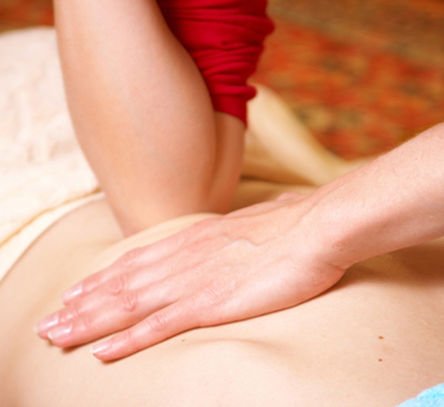
Make sure You are Prepared For Relaxition
Embarking on your first massage session can be both exciting and a little nerve-wracking, especially if you don’t know what to expect. Whether you’re seeking relaxation, relief from muscle tension, or a boost to your overall well-being, massage therapy is a powerful tool for enhancing both physical and mental health. With the right preparation and understanding, your first massage experience can be smooth, enjoyable, and transformative. This guide will walk you through what to expect during your first massage session and provide valuable massage therapy tips to ensure you feel comfortable and confident.
Preparing for Your First Massage
The journey to a great massage experience begins before you even set foot in the massage room. Here are some essential steps to prepare:
- Choose the Right Therapist
- Research and select a qualified therapist who specializes in the type of massage you’re looking for, whether it’s Swedish, deep tissue, or aromatherapy.
- Read reviews or ask for recommendations to ensure they have a good reputation.
- Communicate Your Needs
- When booking your session, let the therapist know about any specific areas of concern, such as back pain or stress, and share any medical conditions (e.g., recent injuries or allergies to oils).
- Dress Comfortably
- Wear loose, comfortable clothing to your appointment. Most massages will require you to undress to your comfort level, but rest assured, you’ll be covered with a sheet or towel throughout the session.
- Hydrate
- Drinking water before your massage helps keep your muscles hydrated, making it easier for the therapist to work through tension.
What Happens When You Arrive
When you arrive for your first massage session, you’ll be welcomed into a calming environment designed to help you relax. Here’s what you can expect:
- Check-In and Paperwork
- You may be asked to fill out a brief health questionnaire. This is your opportunity to share any relevant medical history, injuries, or preferences, such as pressure level (light, medium, or firm).
- Meeting Your Therapist
- Your therapist will introduce themselves and discuss your goals for the session. They may ask questions like:
- “Do you have any areas of tension or pain?”
- “Is there a specific reason for this massage (e.g., relaxation, recovery, or stress relief)?”
- Your therapist will introduce themselves and discuss your goals for the session. They may ask questions like:
- Setting Expectations
- The therapist will explain the process, including how they’ll drape you with a sheet or towel, and let you know you can communicate if anything feels uncomfortable during the session.
During the Massage
Once you’re ready, the therapist will leave the room to allow you to undress to your comfort level and lie on the massage table. Here’s what typically happens during the session:
- Relaxing Into the Environment
- Soft lighting, calming music, and soothing scents (like lavender or eucalyptus) will set the tone for relaxation.
- Starting the Massage
- The therapist will use techniques suited to your chosen massage style. For instance:
- Swedish Massage: Long, flowing strokes designed to relax muscles and improve circulation.
- Deep Tissue Massage: Slower, more focused strokes to target deeper muscle layers and relieve chronic tension.
- The therapist will use techniques suited to your chosen massage style. For instance:
- Adjusting Pressure
- It’s important to communicate with your therapist during the session. If the pressure is too light or too firm, let them know—they want to ensure you’re comfortable.
- Focusing on Target Areas
- If you’ve mentioned specific areas of concern, such as a stiff neck or lower back pain, the therapist will spend extra time addressing those spots.
- Staying Present
- Close your eyes, breathe deeply, and allow your mind to focus on the sensations. Let go of distractions and give yourself permission to fully relax.
After the Massage
When the session ends, the therapist will let you know and step out of the room so you can redress. Here’s what to do next:
- Take Your Time
- Move slowly as you get up from the massage table. Massage increases blood circulation, and you might feel lightheaded if you stand up too quickly.
- Drink Water
- Hydration is key after a massage to help flush out toxins and prevent soreness.
- Post-Session Feedback
- Share any feedback with your therapist. For example, let them know if certain techniques or pressure levels worked particularly well for you.
- Enjoy the Benefits
- You may feel relaxed, rejuvenated, or even a little tired after your first massage experience. Plan for some downtime afterward to extend the benefits.
Massage Therapy Tips for First-Timers
- Ask Questions: If you’re unsure about anything—whether it’s what to wear or how a particular technique feels—don’t hesitate to ask.
- Speak Up: If something doesn’t feel right (e.g., discomfort from pressure or a sensitive area), let the therapist know immediately.
- Be Open: Every massage experience is different. Approach it with an open mind, and don’t worry if it takes a session or two to fully relax.
- Schedule Regular Sessions: To maximize the benefits of massage, consider making it a regular part of your wellness routine.
Why Choose Massage Therapy?
Massage therapy is more than just a luxury—it’s a powerful tool for improving your physical and mental well-being. Whether you’re seeking relief from chronic pain, stress, or simply looking for a way to treat yourself, your first massage session can be the start of a healthier, more balanced lifestyle.
At M4Massages, we make it easy to connect with skilled and certified therapists who will tailor their services to your needs. Explore our directory and book your first session today for a truly transformative experience.
Leave a Reply